 |
|
|
plants text index | photo
index
|
| coastal plants |
| Merambong
or Sea
lettuce Scaevola taccada Family Goodeniaceae updated Jan 13 Where seen? This bush with fleshy green leaves and a 'split' flower is often seen on our rocky shores and sandy beaches where it is tolerant of salty spray although its roots doesn't actually tolerate regular flooding by seawater. Elsewhere, it is found on beaches and sand dunes, and in mangroves only in sandy, well-drained areas. It is considered among the most common seashore shrubs in our part of the world. It has also been introduced to the New World. Previously known as S. frutescens and S. sericea. It is also called 'Ambong-ambong'. Features: A shrub that can grow to a small tree 3-10m tall. Leaves thick and succulent (8-25cm long), arranged alternately in a spiral. The plant can form extensive colonies by underground branching of its stems. Flowers (2-2.5cm) emerge in clusters. The flower is distinctive 'split-into-half' with the style curving over the white petals, but sometimes with violet stripes. According to Giersen, large bees pollinate the flowers, although self-pollination also seems to occur. Fruit globular small (1-1.5cm) fleshy, green ripening white. Each fruit contains 1-2 corky seeds. The fruits float in the sea and may be dispersed by water, as well as by birds. Human uses: According to Corners, the leaves are bitter and "scarcely edible" but the juice of the fruits are soothing and refreshing for inflamed eyes. The large pith of the young twigs are sometimes used by Malays to cut into fancy flowers and other objects. According to Burkill, medicinal uses including the bitter leaves in indigestion, pith for diarrhoea, poultice of leaves for headaches and on swollen legs, juice of berries for sore eyes. According to Wee, in Indonesia the roots are used as an antidote to eating poisonous fish and crabs. According to Giersen, the wood is resistant to sea water but found in small quantities so it is used for making nails for canoes. |
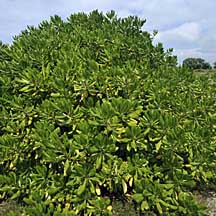 Pulau Semakau, Jan 09 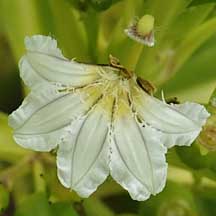 Pulau Semakau, Mar 09 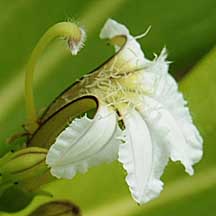 Flower is 'split'. |
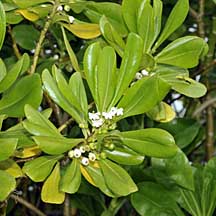 Pulau Semakau, Jan 09 |
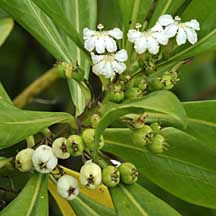 |
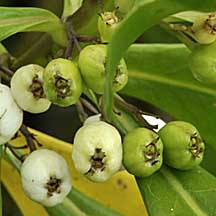 Fruit ripens to white. |
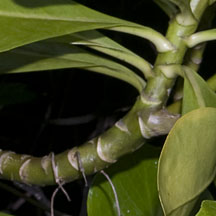 Sentosa, Jul 11 |
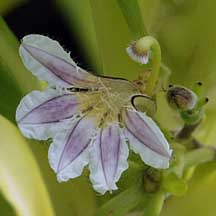 Sometimes with violet markings. |
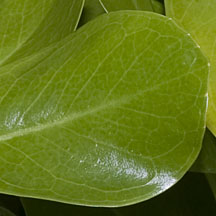 Sentosa, Jul 11 |
Merambong
on Singapore shores
| Photos for free download from wildsingapore flickr |
|
Links
References
|
|
|